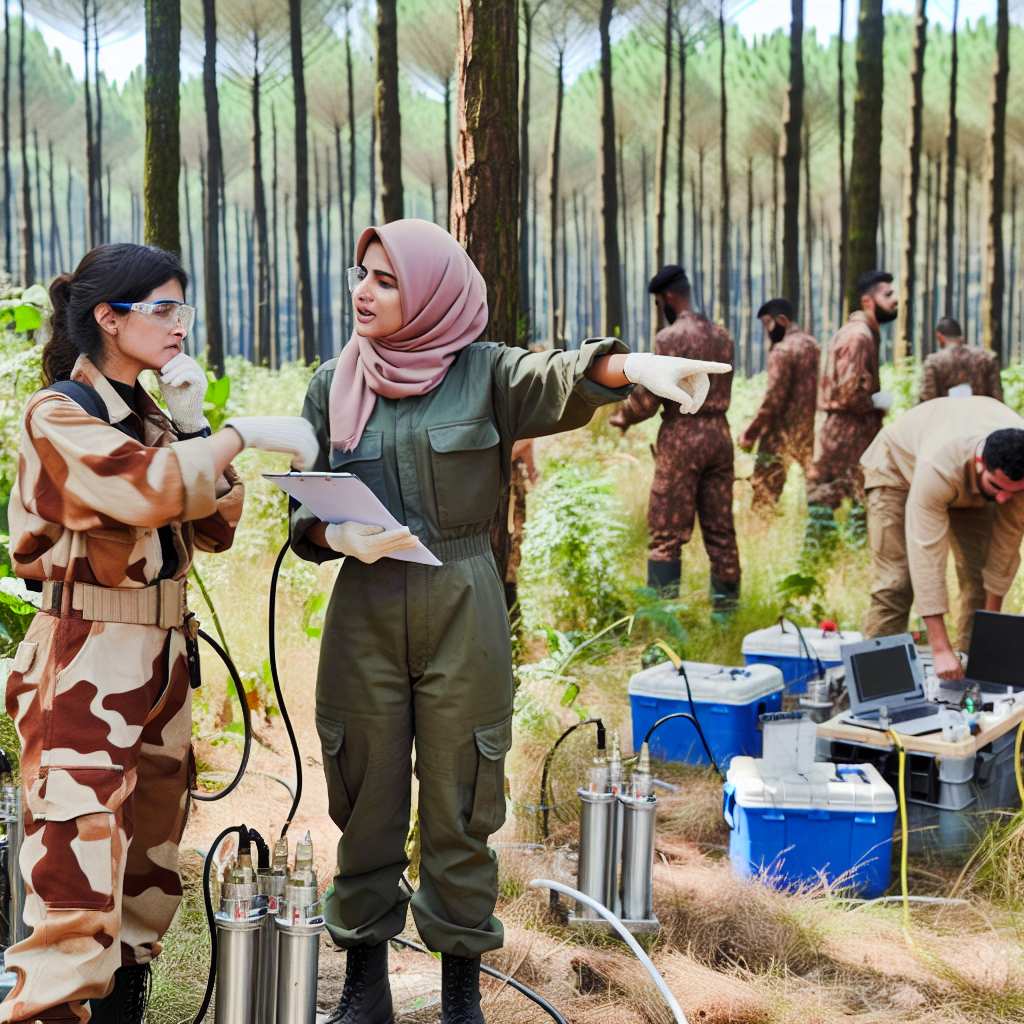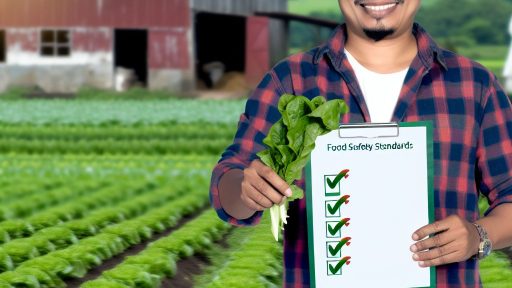Understanding Carbon Sequestration
Carbon sequestration is a vital process in combating climate change.
It involves capturing and storing atmospheric carbon dioxide.
This method helps reduce greenhouse gas concentrations in the atmosphere.
Moreover, it plays a crucial role in mitigating global warming.
Significance of Carbon Sequestration
Carbon sequestration significantly affects our environment and health.
Firstly, it directly reduces the amount of CO2 in the air.
Secondly, it contributes to healthier ecosystems.
Healthy ecosystems support biodiversity and enhance resilience.
Additionally, sequestering carbon can improve air quality.
Methods of Carbon Sequestration
There are various methods for effective carbon sequestration.
Soil management practices are crucial in this effort.
For example, cover cropping can enhance soil health.
Afforestation and reforestation also serve as effective strategies.
These methods involve planting trees or restoring forests.
Furthermore, utilizing bioenergy with carbon capture and storage is essential.
Transform Your Agribusiness
Unlock your farm's potential with expert advice tailored to your needs. Get actionable steps that drive real results.
Get StartedRole of Conservation Programs
Conservation programs play a pivotal role in carbon sequestration.
They often provide funding and resources for sustainable practices.
For instance, the Conservation Reserve Program rewards landowners.
This program encourages them to implement eco-friendly farming techniques.
Additionally, educational outreach helps farmers understand the benefits of carbon sequestration.
Challenges and Opportunities
Despite its importance, carbon sequestration faces numerous challenges.
Land use changes can impact the effectiveness of sequestering carbon.
Moreover, factors like climate variability pose significant risks.
However, innovative research presents new opportunities.
Emerging technologies may enhance carbon capture efficiency.
Thereby, maximizing the potential of conservation programs becomes crucial.
Overview of Conservation Programs
Definitions and Types
Conservation programs focus on preserving natural resources.
Such programs play a critical role in environmental protection.
They aim to restore ecosystems and promote sustainable practices.
Various types of conservation programs exist globally.
Government initiatives often lead these programs.
Non-governmental organizations also contribute significantly.
In some cases, local communities engage in conservation efforts.
Government-Led Conservation Programs
Many countries implement nationwide conservation strategies.
These programs often involve land use regulations.
Funding typically comes from taxpayer money and grants.
Examples include the Conservation Reserve Program in the U.S.
This program encourages farmers to convert land to native vegetation.
It effectively enhances carbon sequestration in soils.
Showcase Your Farming Business
Publish your professional farming services profile on our blog for a one-time fee of $200 and reach a dedicated audience of farmers and agribusiness owners.
Publish Your ProfileNon-Governmental Organizations
NGOs play a pivotal role in conservation efforts.
They often focus on specific regions or issues.
For instance, the World Wildlife Fund emphasizes biodiversity.
Conservation International aims to protect ecosystems globally.
These organizations utilize donations and grants for funding.
Community Engagement in Conservation
Local communities are essential for successful conservation programs.
They provide knowledge of native species and ecosystems.
Community-led initiatives can address unique local challenges.
Programs may include tree planting and habitat restoration.
These efforts often enhance local economies as well.
Impact on Carbon Sequestration
Conservation programs significantly influence carbon sequestration.
Land restoration helps increase carbon storage in soils and vegetation.
Wetlands, forests, and grasslands act as crucial carbon sinks.
Moreover, sustainable agricultural practices reduce emissions.
Each program contributes to climate change mitigation efforts.
The Role of Conservation Programs in Enhancing Soil Health
Understanding Soil Health
Soil health is crucial for sustainable agriculture.
Healthy soil supports crop growth and can sequester carbon efficiently.
Conservation programs enhance soil quality through various practices.
Key Conservation Practices
Cover cropping involves planting crops to cover the soil.
This practice helps prevent erosion and improves soil structure.
Moreover, it adds organic matter back into the soil.
No-till farming significantly reduces soil disturbance.
This method protects soil organic carbon from being released into the atmosphere.
Additionally, it promotes biodiversity in soil ecosystems.
Agroforestry combines agriculture with forestry practices.
This approach improves soil fertility by adding organic matter.
Furthermore, it provides habitat for beneficial organisms.
Impact of Conservation Programs on Soil Health
Conservation programs result in improved soil productivity.
They help retain moisture and nutrients effectively.
Additionally, these programs increase soil resilience against extreme weather.
Healthy soil captures carbon, mitigating climate change effects.
Therefore, these programs play a significant role in carbon sequestration.
They contribute to longer-term sustainability in agricultural practices.
Discover More: Export Regulations Farmers Need To Know For Global Trade
Case Studies: Successful Conservation Programs and Their Impact on Carbon Sequestration
Agricultural Conservation Initiatives
Agricultural conservation initiatives play a crucial role in carbon sequestration.
For instance, the Conservation Stewardship Program in Iowa has proven effective.
This initiative incentivizes farmers to adopt sustainable practices.
As a result, these techniques improve soil health and capture carbon.
Moreover, cover cropping has gained traction among local farmers.
Farmers report enhanced soil fertility and increased organic matter through cover cropping.
Showcase Your Farming Business
Publish your professional farming services profile on our blog for a one-time fee of $200 and reach a dedicated audience of farmers and agribusiness owners.
Publish Your ProfileConsequently, carbon levels in the soil have risen significantly.
Forest Restoration Programs
Forest restoration programs also contribute impressively to carbon capture.
The Reforestation Program in California showcases successful outcomes.
This program focuses on replanting native trees in degraded areas.
Studies indicate that these newly planted trees absorb vast amounts of carbon dioxide.
In addition, this initiative supports biodiversity and local ecosystems.
It creates habitats for wildlife and promotes environmental resilience.
Wetland Conservation Efforts
Wetland conservation has shown remarkable results in carbon sequestration.
The Coastal Wetlands Restoration Project in Louisiana exemplifies this impact.
This project restores natural wetland areas, enhancing their carbon storage capacity.
Restored wetlands provide critical ecosystem services as well.
These services include flood control, water filtration, and habitat for species.
Additionally, research highlights the significant carbon offset potential of wetlands.
Community-Driven Conservation Projects
Community-driven conservation projects lead to meaningful carbon sequestration benefits.
The Community Forest Program in Colorado illustrates this approach.
This program encourages local communities to manage their forests sustainably.
Community involvement fosters a sense of stewardship among residents.
As a result, families engage in tree planting and forest maintenance activities.
These actions lead to enhanced carbon capture in community-managed forests.
Global Carbon Farming Initiatives
Global carbon farming initiatives have emerged as effective strategies.
The 4 per 1000 Initiative promotes soil carbon capture worldwide.
This initiative highlights the role of agriculture in climate change mitigation.
It enhances farmers’ capacities to increase soil organic carbon levels.
Furthermore, countries participating in this initiative report positive outcomes.
They observe both environmental benefits and increased farm productivity.
Delve into the Subject: Adapting Farms to Comply with Climate Policies
Technological Innovations in Conservation Practices
Overview of Technological Advances
Technological innovations drive conservation practices worldwide.
They play a crucial role in enhancing carbon sequestration efforts.
Tools and technologies continue to evolve rapidly.
Farms use precision agriculture techniques effectively.
These techniques optimize resource use and reduce waste.
Data-Driven Decision Making
Data analytics transforms conservation strategies.
Farmers now access information on soil health and crop yield.
This information allows for informed decision-making.
Remote sensing technologies offer new insights.
Drones monitor crop conditions and land use efficiently.
Innovative Land Management Techniques
Land management has evolved through innovative practices.
Agroforestry integrates trees and crops strategically.
This practice enhances soil health and biodiversity.
Cover cropping protects the soil during off-seasons.
Showcase Your Farming Business
Publish your professional farming services profile on our blog for a one-time fee of $200 and reach a dedicated audience of farmers and agribusiness owners.
Publish Your ProfileIt reduces erosion and improves carbon storage in soil.
Sustainable Water Conservation Technologies
Water conservation techniques are vital in agriculture.
They minimize resource use while maximizing yield.
Irrigation improvements promote efficient water usage.
Techniques such as drip irrigation deliver water precisely.
Smart water management systems adjust flows based on current needs.
Collaboration with Technology Companies
Collaboration grows between farmers and tech companies.
Agri-tech startups introduce innovative solutions.
These partnerships enhance sustainability in agriculture.
Solutions often focus on carbon capture and storage.
Together, they create practical applications for conservation.
Explore Further: Food Safety Standards and Their Impact on Agricultural Markets

Economic Incentives for Farmers Participating in Conservation Programs
Overview of Economic Incentives
Economic incentives play a crucial role in encouraging farmers to join conservation programs.
These incentives often come in the form of financial assistance and grants.
Farmers qualify for these programs based on specific conservation practices they adopt.
Moreover, such incentives can significantly boost farm profitability.
Types of Economic Incentives
Various types of economic incentives exist to support farmers.
- Direct payments for implementing sustainable practices enhance income.
- Tax credits can reduce overall expenses for farmers.
- Cost-sharing programs assist farmers in covering initial implementation costs.
Each type of incentive has specific eligibility criteria to guide farmers.
Impact of Incentives on Farmer Participation
These economic incentives lead to increased farmer participation in conservation programs.
Farmers are more likely to adopt practices that improve carbon sequestration.
This participation, in turn, contributes significantly to environmental benefits.
For instance, improved soil health plays a vital role in carbon storage.
Success Stories
Several success stories illustrate the effectiveness of these incentives.
The Green Fields Initiative in Colorado exemplifies successful implementation.
Farmers reported increased yields and better soil quality due to conservation practices.
Additionally, the River Valley Association in Illinois showcased similar positive outcomes.
Challenges and Considerations
Despite the benefits, challenges exist in accessing these incentives.
Some farmers face bureaucratic obstacles in application processes.
Furthermore, education and awareness about available programs are critical.
Addressing these challenges can enhance the reach of conservation programs.
Delve into the Subject: Agricultural Insurance Policy Claims: A Step-by-Step Guide
Challenges and Barriers to Implementing Conservation Programs
Financial Constraints
Many conservation programs face significant financial barriers.
Funding for these initiatives can be limited and inconsistent.
Moreover, some landowners may prioritize immediate profits over long-term sustainability.
Additionally, upfront costs can deter participation in these programs.
Grant programs offer opportunities, but access can vary widely.
Regulatory Hurdles
Regulatory complexities can impede the effectiveness of conservation programs.
Landowners often struggle to navigate the legal requirements for participation.
Furthermore, differing regulations across states can create confusion.
Some landowners may face penalties for non-compliance.
Showcase Your Farming Business
Publish your professional farming services profile on our blog for a one-time fee of $200 and reach a dedicated audience of farmers and agribusiness owners.
Publish Your ProfileStreamlining regulations could foster increased participation in these programs.
Lack of Awareness and Education
A significant barrier to conservation programs is the lack of awareness.
Many landowners may not understand the benefits of these initiatives.
Educational outreach can play a crucial role in overcoming this challenge.
Workshops and informational sessions can help clarify goals and methods.
Moreover, sharing success stories can inspire more landowners to get involved.
Cultural and Social Resistance
Cultural attitudes towards land use can present challenges.
Some communities prioritize traditional practices over conservation efforts.
Additionally, misconceptions about conservation methods can hinder action.
Building trust within communities can facilitate better engagement.
Engaging influential community leaders can also drive acceptance.
Technological Barriers
Access to the latest technologies is crucial for effective conservation.
However, many smaller landowners lack the necessary resources.
Training programs can help bridge this technological gap.
Moreover, partnerships with tech companies could enhance accessibility.
Implementing user-friendly tools can encourage more widespread adoption.
Future Directions: Integrating Conservation Programs with Climate Policy
Understanding Conservation Programs
Conservation programs focus on preserving biodiversity and ecosystems.
They play a vital role in combatting climate change.
By protecting forests, wetlands, and grasslands, these programs enhance carbon sequestration.
These initiatives are essential for creating sustainable ecosystems.
Collaboration with Climate Policy
Integrating conservation programs into climate policy can amplify their benefits.
Such collaboration fosters a comprehensive approach to environmental challenges.
It ensures that policies offer incentives for landowners to engage in conservation.
Moreover, it promotes synergy between ecological and climate goals.
Innovative Funding Mechanisms
New funding mechanisms can support the integration of these programs.
Carbon credits offer financial incentives for conservation efforts.
Public-private partnerships can also drive innovative solutions.
Engaging local communities enhances funding sustainability.
Policy Recommendations
Policymakers should prioritize conservation in climate action plans.
Establishing clear guidelines helps stakeholders understand their roles.
Encouraging research on the impacts of conservation programs strengthens findings.
Furthermore, promoting awareness about these programs can drive participation.
Monitoring and Evaluation
Establishing robust monitoring systems is crucial for assessing effectiveness.
Regular evaluations provide data for adapting and improving strategies.
Transparency in reporting enhances trust among stakeholders.
Using science-based metrics will clarify impacts on carbon sequestration.
Engaging Stakeholders
Engaging diverse stakeholders strengthens conservation initiatives.
Farmers, landowners, and indigenous groups should have a voice.
This collaboration builds a shared understanding of benefits and challenges.
Education and outreach efforts can increase stakeholder involvement.
Showcase Your Farming Business
Publish your professional farming services profile on our blog for a one-time fee of $200 and reach a dedicated audience of farmers and agribusiness owners.
Publish Your ProfileAdditional Resources
Agriculture Innovation Agenda | Home
USDA Launches First Phase of Soil Carbon Monitoring Efforts …




